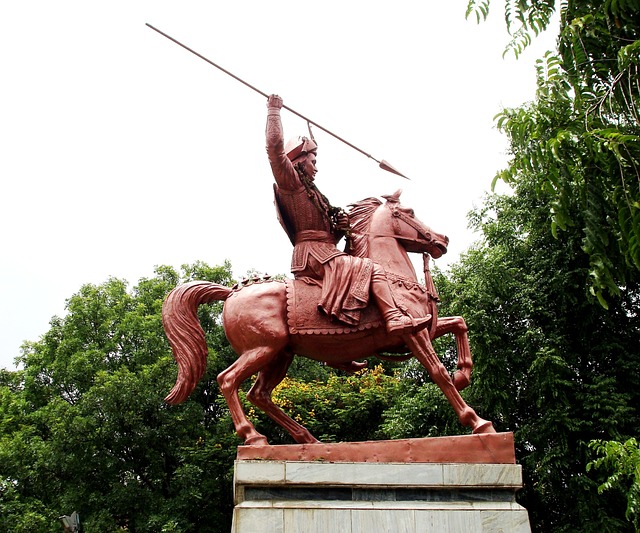After the collapse of the Mauryan Empire, northern India was in a state of turmoil for a very long period, passing sporadically under the power of the Bactrians and the Scythian Kushans. When the Andhra dynasty in southern India also fell, they left a power vacuum that Chandragupta of Pataliputra filled. Sassanid Persia's ascendance to prominence also contributed to their decline. The Mauryan Empire had its headquarters in the Magadha region, in the lower Ganges Valley, and Chandragupta claimed to be descended from the dynasty's founder. In 320 CE, after taking control of the Ganges Valley during a campaign, he declared himself Chandragupta I, King of Kings.
As a result of his marriage to a local king's daughter, their son Samudragupta was able to claim noble ancestry from both parents. Following Chandragupta's demise in 330, Samudragupta launched an offensive to the west and southwest in an effort to restore the Mauryan Empire's borders, capturing Rajputana and the northern Deccan plateau in central India. The remnants of the Andhra territory paid tribute to him during his foray down the eastern coast, which extended as far as present-day Madras. He attacked Assam, Punjab, and Nepal, and was successful in getting them to pay tribute. The aggressive objectives of Samudragupta's ancestors were maintained by his son Chandragupta II after his death in 375. After defeating the Punjabis and seizing control of their northwest province, he annexed Malwa, Saurashtra, and Gujarat.
Local autonomy was greatly used because the Gupta empire was not as centralized as the Mauryan one. But things improved, and the principal historian of the time, the Chinese traveler Fa Hsien, praises the government for keeping the area safe and tranquil. Poetry and literature were elevated to new heights, and scientists determined the exact length of the solar year and the value of pi. The best university in the world at the time was founded in Nalanda, not far from Pataliputra's capital, and it drew students from all over India as well as from China and Southeast Asia.
After Chadragupta II passed away in 413, the empire did not last very long. The Ephthalites, sometimes known as the White Huns, crossed northwest India and modern-day Afghanistan. The Gupta Empire fell in 480, despite Kumaragupta and Skandagupta's efforts to temporarily fend off the pressure. The subcontinent remained fragmented until Harsha, the last of the powerful indigenous leaders, rose to power. The White Huns established a short-lived kingdom in the northwest. Although the reunion reached roughly the same extent as the Gupta Empire under his rule (606–647), its decentralization ensured that it would disintegrate into warring groups after his passing. There wouldn't be a centralized administration once more until the Mongol invasion of India.

References:
Allan, John, The Cambridge Shorter History
of India (Delhi: S. Chand, 1964); Basham, A. L.,
The Wonder That Was India (New York: Taplinger,
1954); Gokhale, Balkrishna, Ancient India,
History and Culture (Bombay: Asia House, 1959).
Posted using Proof of Brain
